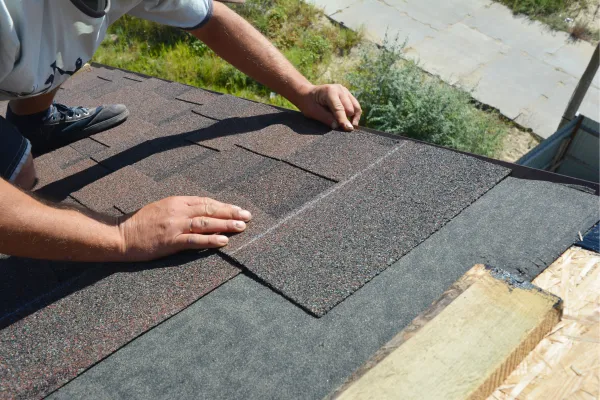Frequently Asked Questions
Blog

Adding Clarity: Replace Roof, Write Off the Old Roof
If you own your office building or other commercial or residential rental property, you are going to have some upkeep headaches.
In this article, we elaborate on how deducting the replaced roof, elevator, HVAC, or other components adds to your cash flow and net worth.
The write-off of the old roof creates three tax benefits for you:
An immediate ordinary loss write-off. Hopefully it’s immediately deductible, but the passive loss rules could delay the benefit.
A conversion of otherwise unrecaptured Section 1250 gain to capital gain.
A revenue stream generated by the time value of money. Again, this depends on no delay in the savings caused by the passive loss rules.
Ordinary Loss Write-Off
We are going to use the facts from last month’s article: You have a building (ignoring the land) that you purchased seven years ago for $4 million. Now, you need to replace the roof and some other components. You use the IRS regulations or a cost segregation study to find that you can deduct $660,000 as an ordinary loss today
You are in the 40 percent tax bracket, so your immediate cash savings are $264,000 ($660,000 x 40 percent), assuming the passive loss rules pose no problems.
If the passive loss rules delay your deduction until you sell, the $660,000 ordinary loss deduction is there waiting for you, and you deduct it as an ordinary loss. It’s separate from your capital gain on the sale of the building.
Time Value of Money
Let’s say you deduct the $660,000 and invest the $264,000 so that it earns 5 percent after taxes. Your earnings would look like this:
Year Cash 5% After-Tax Earnings
7 $264,000 $0
8 $264,000 $13,200
9 $277,200 $13,860
10 $291,060 $14,553
11 $305,613 $15,281
12 $320,894 $16,045
13. $336,938 $16,847
14 $353,785 $17,689
15 $371,475 $18,574
16 $390,048. $19,502
17 $409,551 $20,478
18 $430,028 $21,501
19. $451,530 $22,576
20 $474,106 $23,705
21 $497,811 $24,891
22 $522,702 $26,135
23 $548,837 $27,442
24 $576,279 $28,814
25 $605,093 $30,255
26 $635,347 $31,767
27 $667,115 $33,356
28 $700,471 $35,024
29 $735,494 $36,775
30 $772,269 $38,613
31 $810,882 $40,544
32 $851,426 $42,571
33 $893,998 $44,700
34 $938,698 $46,935
35 $985,632 $49,282
36 $1,034,914 $51,746
37 $1,086,660 $54,333
38 $1,140,993 $57,050
39 $1,198,042 $59,902
Key point. You gain the time value of money only if you (a) avoid the passive loss rules, (b) elect to deduct the replaced components, and (c) invest the savings (in this case, at 5 percent after taxes).
More Savings When You Sell
When you sell your building for a profit, to the extent that the profit is from your prior building depreciation, you could pay a special capital gain recapture tax of up to 25 percent (this is known technically as “unrecaptured Section 1250 gain”).
Key point. When you use the partial disposition election, you have no accumulated depreciation on your books for the disposed assets. With no depreciation, you avoid the tax of up to 25 percent on the uncaptured Section 1250 gain on the disposed assets.
To see how this works when you have to pay the 25 percent tax on your uncaptured Section 1250 gain, say you sell the building for $5 million shortly after you replace the roof and other components. Assume the $4 million basis includes the new roof and other components.
No Roof Write-Off Roof Write-Off
Sale Price $5,000,000 $5,000,000
Basis. -$4,000,000 -$3,200,000
Capital Gain $1,000,000 $1,800,000
Capital Gain Tax $200,000 $360,000
Recapture Tax $1,000,000 $800,000
Total Tax on Sale $1,200,000 $1,160,000
At the point of sale, you realize the benefit of decreasing the basis of the building for the disposed-of roof. In this example, you pocket an additional $40,000 at the time of sale.
If you sell in a later year, the $40,000 in savings shown above would increase each year because you would be widening the difference in basis. The increase in savings assumes you would be subject to the 25 percent tax on your uncaptured Section 1250 gain in the year of sale.
Reminder: Making the Election Is So Simple
Calculating the write-off of the replaced component calls for some work, but making the actual tax election in your tax return for your partial disposition is downright easy.
To make the election, you simply claim depreciation on the new asset and deduct your loss or report your gain on the old asset in a timely filed tax return (including extensions).5 Unlike with many elections, you don’t need to attach any special statement or form.
Takeaways
When you replace a structural component in a building, you likely can realize substantial savings:
An immediate deduction on the write-off of the old component if you can avoid the passive loss rules. If you run into the passive loss rules, you claim the loss in future years either (a) when you have passive income or (b) when you sell the building.
If you can obtain the immediate deduction, and if you invest the savings, you can grow a nest egg (perhaps a large one).
You also gain at the point when you sell the building, if you are in a tax bracket greater than 25 percent, because you will have lower unrecaptured Section 1
Follow me on Instagram, LinkedIn and Youtube Check out my website.
Matt Bontrager


We help Investors & Entrepreneurs pay less taxes.
© TrueBooks CPA All rights reserved.

